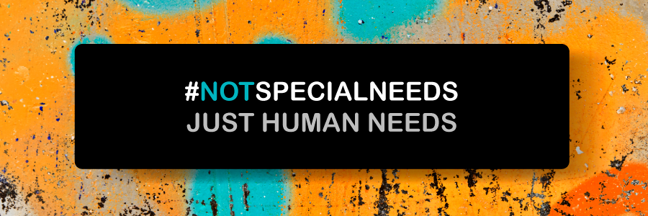
#NotSpecialNeeds
Remember, we have rights, not needs.
Watch it!This video created for World Down Syndrome Day is a powerful reminder that all people have common human needs: to have shelter, to eat and sleep, to access education and to be loved.

Examples of barriers are:
the absence of a ramp or lift, preventing a person who uses a wheelchair from accessing a public building
instructions given using complex words and sentences, meaning that students with language difficulties cannot understand what their teacher is saying
video shown without closed captions, meaning a person with hearing impairment cannot access the dialogue, sound effects or other non-speech sounds in the video.
21 simple design elements that will make any School Assessment Task sheet accessible
- identifying any remaining barriers
- designing an adjustment to minimise/remove the barrier
- regular reflection and review to ensure the adjustment is appropriate and effective.
social model of disability
inclusive language
principles of universal design
BOOK: "Inclusive Education for the 21st Century" by Linda J. Graham
Source: Queensland University of Technology
No comments:
Post a Comment